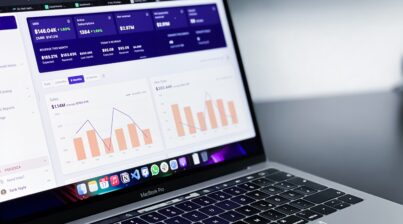Photo by Luke Chesser on Unsplash
Before HR technology was even available, HR leaders managed people analytics through manual processes such as spreadsheets, hand-written records, and manual data entry. This was a heavy lift involving collecting workforce data manually through surveys or employee interviews, and then manually entering the data into spreadsheets and other forms of reporting.
Needless to say, analysis of this data was also done manually. This involved sorting through large amounts of data and manually identifying patterns, trends, and insights. As you can guess, this process was time-consuming, prone to errors, and limited the amount of data that could be effectively analyzed. And unfortunately, many HR teams still work this way. Not fun or efficient.
Is Relying On Your Own Experience Good Enough?
HR leaders did – and still do – rely on their own experience and intuition to make decisions about workforce trends, employee engagement, and retention. Although experience and intuition hold quite a bit of weight, this approach is not data-driven and it’s less effective for identifying and predicting workforce trends.
The lack of technology makes it difficult for HR leaders to share data and insights with other managers, limiting their ability to have a seat at the executive table. That means there’s a lack of data-driven decisions when it comes to the workforce.
Why Is HR Technology Needed?
We live in a technology-driven world. It’s obvious that HR technology is needed in today’s workforce. Here are several reasons:
- Manage Remote Employees: Remote work is here to stay. HR technology is needed to manage and track employee attendance, performance, engagement, turnover, retention, and satisfaction, to name a few.
- Streamline HR Processes: HR technology can automate current manual processes, making the HR team more productive and efficient. Wouldn’t it be nice to automate data entry, record-keeping, and reporting?
- Improve Employee Data Quality: To have accurate people analytics, it’s essential that data is accurate and up to date. This can help HR professionals and executives feel confident that they are making informed decisions.
- Enhance DEI Initiatives: Organizations are realizing the necessity of diversity, equity, and inclusion in the workplace. HR technology can help promote, measure, track, and report data on DEI metrics.
- Improve Talent Management: Talent recruiting and acquisition, professional development, and succession planning are key for managing the workforce. HR technology can help with these talent management processes.
These are just a few areas where HR technology can help HR teams. In today’s rapidly changing and competitive business environment, HR technology is becoming increasingly important to drive better decision-making and business outcomes. Next, let’s cover the several types of HR technology.
What Types Of HR Technology Are There?
Now is the time to move away from gut feelings, instinct, and intuition and start using HR technology to help change how HR relates to employees, executive leadership, and the business as a whole. But what types of HR technology are there?
Let’s look at the various HR technology that Employee Cycle integrates with.
Applicant Tracking Systems (ATS)
These systems are used to manage and streamline the recruitment process, including posting job openings, tracking applicants, and scheduling interviews. Take a look at our Applicant Tracking integrations.
Employer Brand Platforms
These platforms are used for employers to share current job listings and allow current/former employees to share their experience working with that employer. Find out about our Employer Brand integrations.
Employee Engagement Systems
These systems are used to measure and improve employee engagement, track employee feedback, and provide tools for employee communication and collaboration. Learn more about our Engagement integrations.
Human Resource Information Systems (HRIS)
These systems are used to manage and automate HR processes such as employee data management, payroll, and benefits administration. Check out our pre-built HRIS integrations.
Learning Management Systems (LMS)
These systems are used to manage and deliver training and development programs for employees. Review our LMS integrations.
Objectives & Key Results (OKR) Systems
This is software that helps organizations execute their strategies. See our OKR integrations.
Payroll and Tax Filing:
These systems are used to manage the process of payroll and tax filings, including calculating and distributing employee paychecks, and ensuring compliance with tax regulations. Discover more about our Payroll integrations.
Performance Management Systems:
These systems are used to manage and automate the performance evaluation process, including setting goals, providing feedback, and conducting performance reviews. Our pre-built Performance integrations are here.
Rewards & Recognition Systems:
These systems help organizations recognize and reward their employees and help increase employee engagement and retention. Check out our Rewards & Recognition integration.
In reality, your HR team is sitting on a goldmine of data. So, how can you leverage all this HR technology and transform your people analytics? Let’s look at a few ways.
How Can HR Technology Transform People Analytics?
Your HR technology can transform your people analytics into a decision-making machine in several ways. Let’s look at some of them:
- Data Gathering and Analysis: HR technology enables the gathering of HR data from disparate systems on employee behavior, performance, and engagement. This data can then be analyzed to identify patterns, trends, and insights that can inform HR and executive decision-making.
- Predictive Analytics: With the help of sophisticated algorithms, HR technology can predict future workforce trends, identify potential employee turnover, and even predict which employees are most likely to be promoted.
- Employee Self-Service: HR technology enables employees to access and manage their own information, such as updating personal details or requesting time off. This can help reduce the workload for HR professionals, while also improving employee engagement and empowerment.
- Dashboards: HR technology provides intuitive dashboards and visualization tools that allow HR professionals to easily understand and communicate complex data to management.
Want to learn more about how your HR technology can transform your organization’s people analytics? Check out this Case Study on AcctTwo.
In Conclusion
Overall, HR technology is transforming people analytics by enabling the collection and analysis of more data, streamlining HR processes, improving data quality, providing predictive analytics, and making data more accessible and easier to understand. This helps HR leaders make more informed decisions, improve employee engagement and retention, and drive better business outcomes.
Want to learn how Employee Cycle can help you lead with people analytics? Schedule your demo today!








